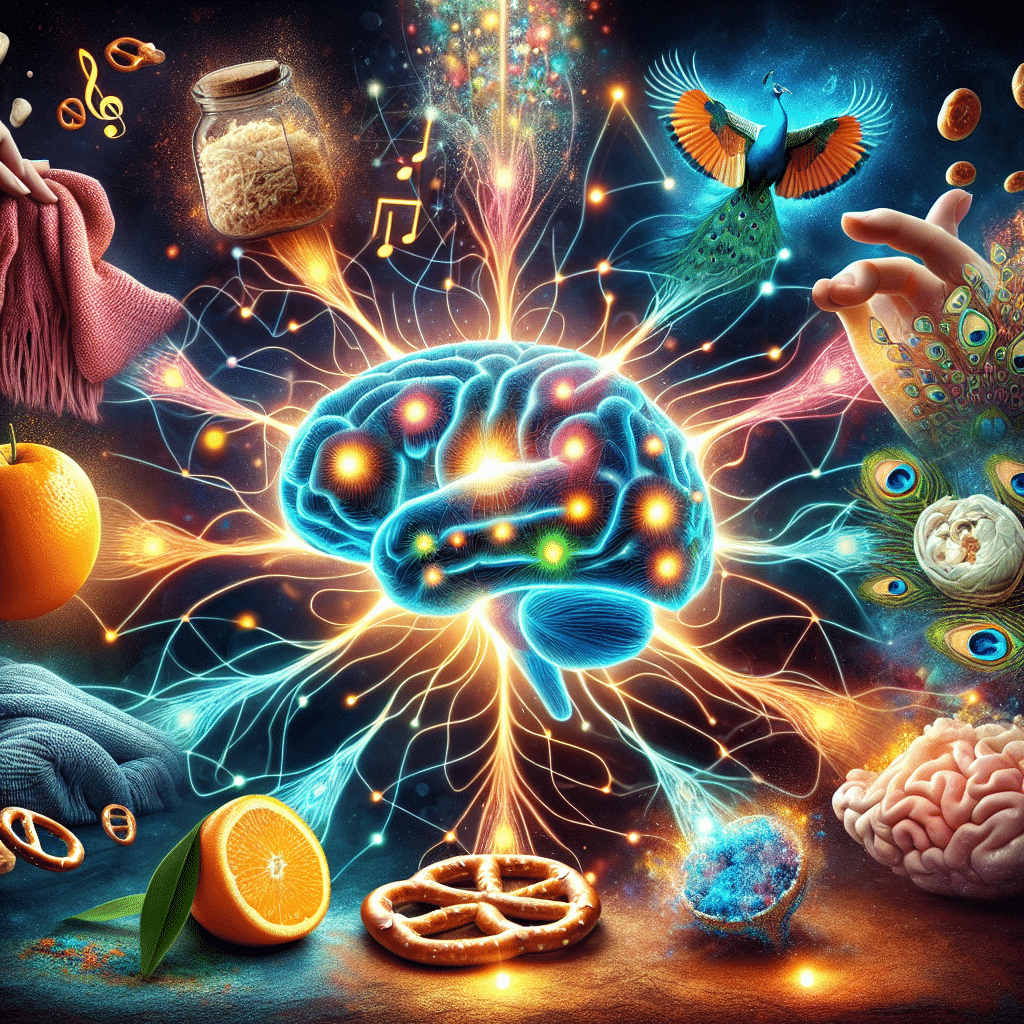The Science of Craveability: Decoding the Senses
-
Table of Contents
The Science of Craveability: Decoding the Senses

Craveability is a term that often surfaces in discussions about food, marketing, and consumer behavior. It refers to the irresistible urge to consume a particular food or product, driven by a complex interplay of sensory experiences and psychological triggers. Understanding the science behind craveability is not only fascinating but also crucial for food manufacturers, restaurateurs, and marketers aiming to create products that resonate with consumers on a deeper level. This article delves into the sensory science that underpins our cravings and how it can be harnessed to create products that are almost impossible to resist.
Understanding Craveability
At its core, craveability is about creating a memorable and enjoyable experience that consumers want to repeat. It’s the secret sauce that makes certain foods or products stand out in a crowded marketplace. But what exactly makes something craveable? The answer lies in the complex interaction of our senses and the psychological factors that influence our eating behaviors.
The Role of the Senses
Our senses play a pivotal role in determining the craveability of a product. Taste, smell, sight, touch, and even sound can all contribute to the overall experience of consuming a product. Here’s how each sense contributes to craveability:
- Taste: The most obvious contributor to craveability is taste. Sweet, salty, sour, bitter, and umami flavors can all trigger pleasure responses in the brain.
- Smell: Aroma can evoke memories and emotions, making it a powerful driver of craveability. The smell of freshly baked bread or sizzling bacon can be almost irresistible.
- Sight: We eat with our eyes first. The appearance of food, including its color and presentation, can greatly influence our desire to consume it.
- Touch: Texture plays a crucial role in satisfaction. The crunch of a potato chip or the creaminess of ice cream can make a product highly craveable.
- Sound: The sound of food, such as the crackle of a crispy snack or the fizz of a carbonated drink, can enhance the sensory experience and contribute to craveability.
Psychological Triggers of Cravings
While sensory inputs are critical, psychological factors also play a significant role in craveability. These include:
- Emotional connections: Comfort foods are often linked to positive memories or emotions, making them highly craveable during times of stress or nostalgia.
- Reward mechanisms: Eating certain foods can release dopamine, a neurotransmitter associated with pleasure and reward, reinforcing the desire to experience that pleasure again.
- Novelty and variety: Humans are naturally drawn to new experiences. Introducing novel flavors or textures can trigger curiosity and cravings.
- Scarcity: Limited availability can create a sense of urgency and increase craveability, as seen with seasonal or limited-edition products.
Case Studies and Examples
Several case studies highlight the successful application of craveability science. For instance, the fast-food industry has mastered the art of combining flavors and textures to create highly craveable menu items. The iconic McDonald’s Big Mac, with its combination of savory beef, tangy sauce, and crisp lettuce, is a classic example of craveability in action.
Another example is the snack industry, where companies like Doritos create products with the perfect balance of salt, crunch, and flavor intensity to keep consumers reaching for more. The sensory experience of eating Doritos is designed to be as pleasurable as possible, making them a go-to snack for many.
Creating Craveable Products
So, how can companies create products that tap into the science of craveability? Here are some strategies:
- Flavor layering: Combining multiple flavors can create a complex taste profile that tantalizes the taste buds and keeps consumers coming back for more.
- Aroma engineering: Carefully crafting the scent of a product can make it more appealing and memorable.
- Visual appeal: Investing in attractive packaging and presentation can make a product more enticing.
- Texture contrast: Incorporating contrasting textures, such as crunchy and creamy, can enhance the eating experience.
- Sound design: Paying attention to the auditory aspects of a product, like the snap of a chocolate bar, can add to its craveability.
Conclusion: Key Takeaways on Craveability
In conclusion, the science of craveability is a multifaceted field that encompasses sensory experiences and psychological factors. By understanding how our senses and emotions interact to create cravings, companies can design products that not only satisfy but also delight consumers. The key to creating craveable products lies in the strategic combination of taste, smell, sight, touch, and sound, along with an understanding of the psychological triggers that drive our eating behaviors.
ETChem’s Protein Products: A Craveable Choice
When it comes to creating craveable products, the quality of ingredients is paramount. ETChem’s protein products are an excellent choice for manufacturers looking to enhance the sensory appeal of their offerings. Their range of collagens, including marine, fish, bovine, and chicken collagen, provides a neutral taste and instant solubility, making them ideal for a variety of applications in the food and beverage industry.
ETChem’s commitment to quality and their ability to tailor their collagen powders and nutritional supplements to specific industry needs make them a go-to source for creating products that consumers will crave. Whether you’re developing a new health and wellness product, a sports nutrition line, or a delicious food or beverage item, ETChem’s protein solutions can help you achieve that irresistible factor that keeps customers coming back for more.
About ETChem:
ETChem, a reputable Chinese Collagen factory manufacturer and supplier, is renowned for producing, stocking, exporting, and delivering the highest quality collagens. They include marine collagen, fish collagen, bovine collagen, chicken collagen, type I collagen, type II collagen and type III collagen etc. Their offerings, characterized by a neutral taste, instant solubility attributes, cater to a diverse range of industries. They serve nutraceutical, pharmaceutical, cosmeceutical, veterinary, as well as food and beverage finished product distributors, traders, and manufacturers across Europe, USA, Canada, Australia, Thailand, Japan, Korea, Brazil, and Chile, among others.
ETChem specialization includes exporting and delivering tailor-made collagen powder and finished collagen nutritional supplements. Their extensive product range covers sectors like Food and Beverage, Sports Nutrition, Weight Management, Dietary Supplements, Health and Wellness Products, ensuring comprehensive solutions to meet all your protein needs.
As a trusted company by leading global food and beverage brands and Fortune 500 companies, ETChem reinforces China’s reputation in the global arena. For more information or to sample their products, please contact them and email karen(at)et-chem.com today.




